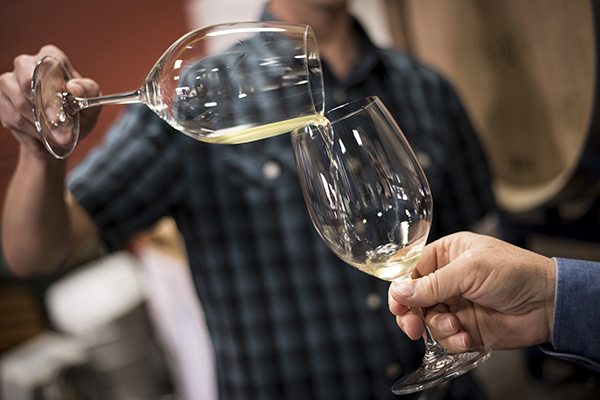Is Orange the New Black in Chardonnay?

First, there was orange wine. Now black may be the new orange, at least if wine reporter Katherine Cole has anything to say about it. Katherine, in her recent article ‘Meet Black Chardonnay,’ appears to have rediscovered a ‘nearly forgotten technique,’ which, in the hands of her friends like former wine critic Jon Bonné, will revolutionize the production of Chardonnay going forward. And what is this nearly forgotten technique kept she’s uncovered? It is hyperoxidation of the unfermented grape juice. By exposing the press wine to air before fermentation, the wine will resist oxidation for many years in the bottle. Cole even goes so far as to say black is the cure for the premature oxidation observed in some Burgundian Chardonnays a decade ago.
In coining the term ‘black wine,’ Cole describes the deep browning fresh grape juice undergoes when exposed to oxygen. But Cole is mistaken in thinking that this is a forgotten technique. UC Davis introduces the science behind hyperoxidation in second-semester enology, and I spend a lecture discussing it in the Introduction to Enology VWT 20 class at Las Positas College in the fall.
One of the first steps in producing a traditional Chardonnay is to separate the juice from the skins. The juice is allowed to settle for a day or two, then fermented. It is current practice to limit the amount of oxygen the juice is exposed to immediately after pressing. This is to avoid oxidative browning, which at this stage is largely enzymatic (presence of polyphenol oxidase, or PPO). The brown coloration is due to the polymerization of polyphenols, which can be inhibited by the addition of sulfites. The brown coloration precipitates out during fermentation so that even an excessively brown (black) juice runs clear at the end.
Cole has confused style with fashion. Hyperoxidation (browning) to stabilize wine is not a forgotten technique. Rather, it is out of fashion. There is always a trade-off between stability and flavor. Oxidation of the polyphenols removes much of the fruitiness that we associate with Chardonnay. The black Chardonnay, while complex and worth contemplation in its own right, will always seem a little lifeless to me. Like everything else in fine winemaking, choice of technique is a matter of winemaking style.
We are getting ready to harvest Chardonnay in a few weeks. Stella believes it may be the first cultivar we pick since the fruit went into veraison earlier than our other cultivars. As we harvest, press, barrel, and ferment, I will keep you informed of the techniques we use. It will be a good opportunity to discuss the Occasio style of Chardonnay, and how we make use of the ‘old’ and the ‘new’ in its creation.


